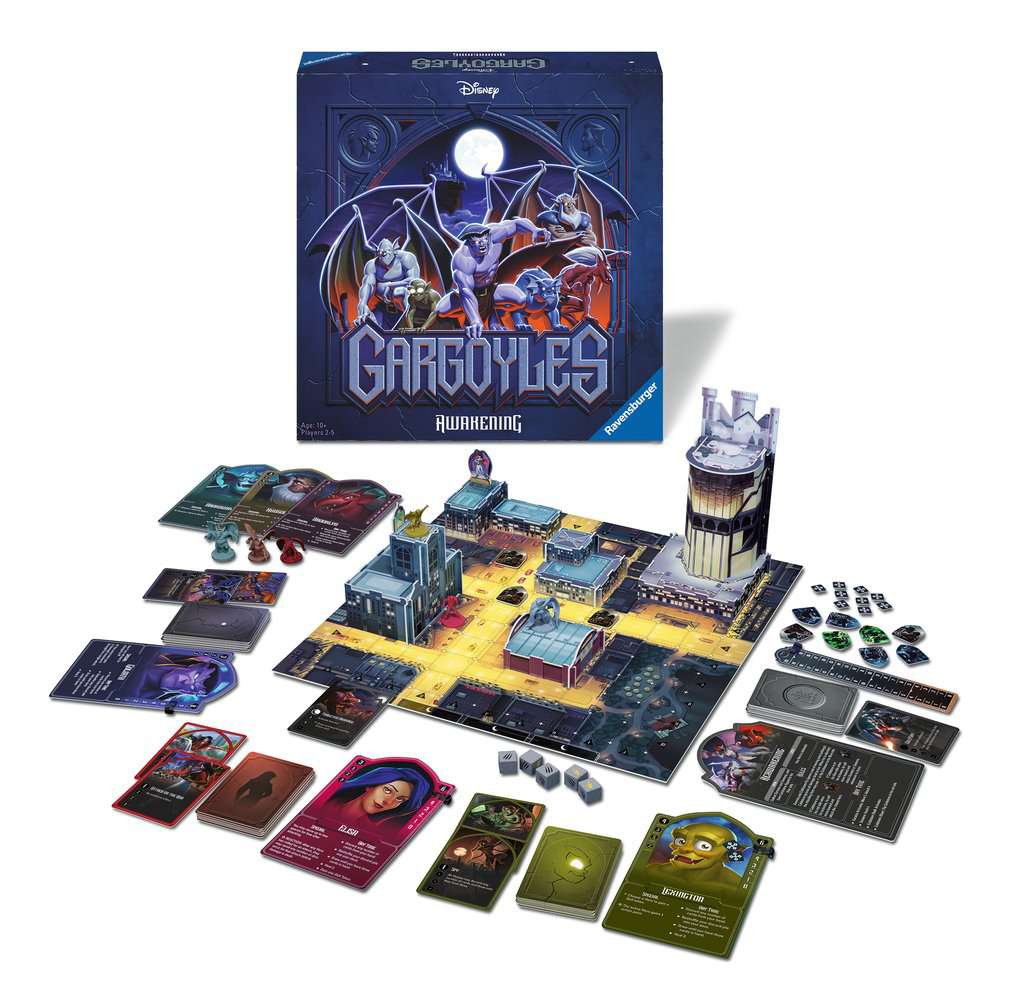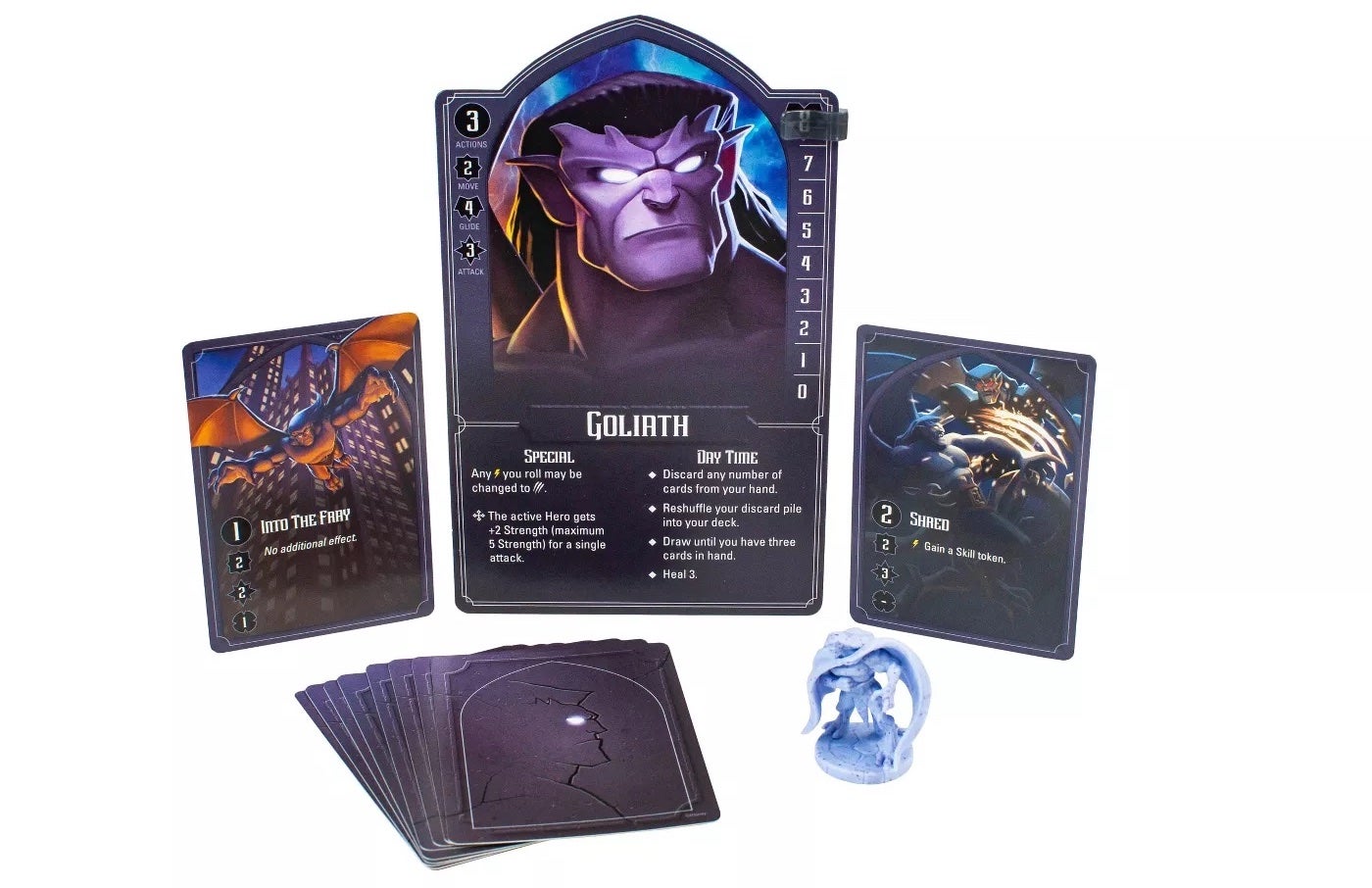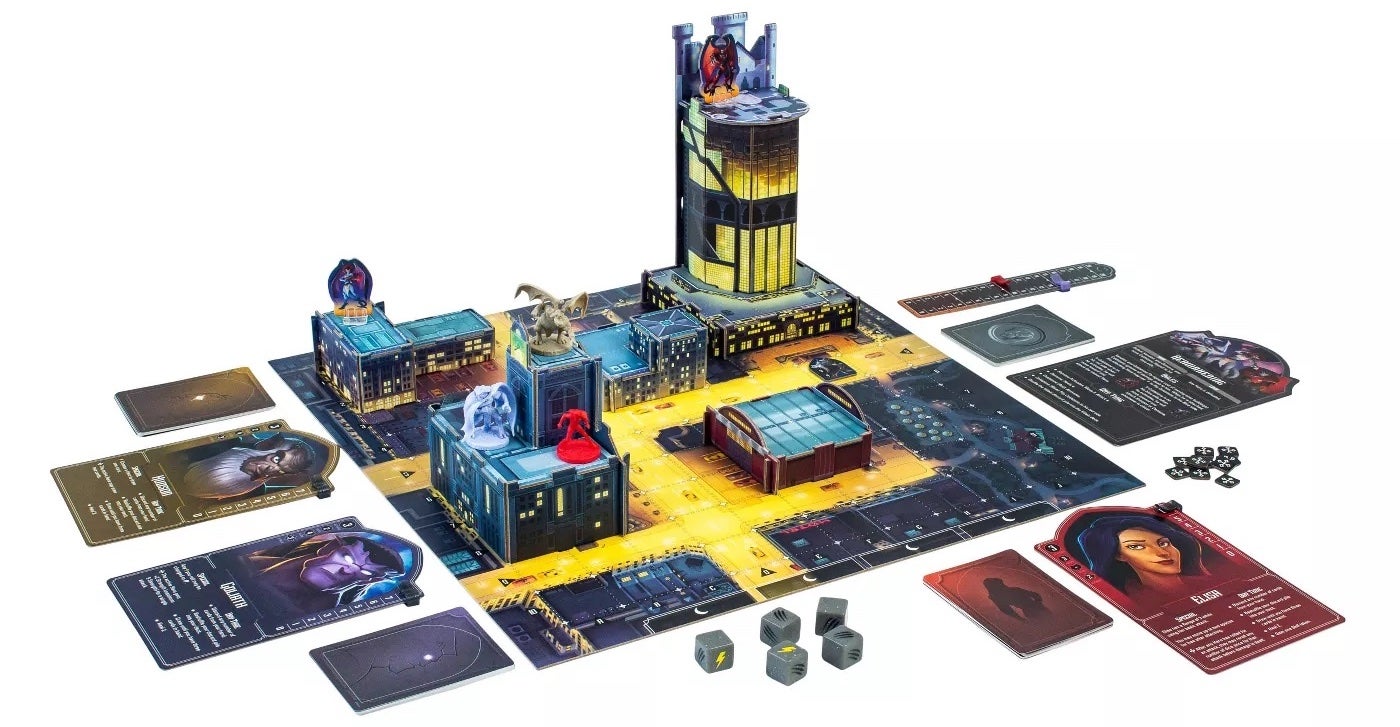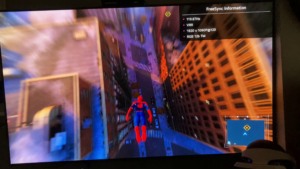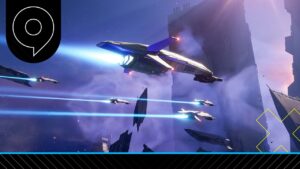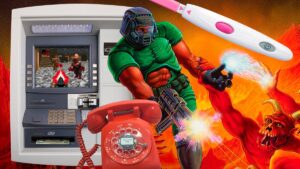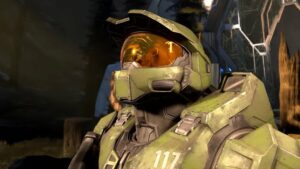Disney’s ‘90s animated series Gargoyles helped set a new standard for animated storytelling with complex villains, serialized episodes and deep narrative arcs. The show would provide excellent material for a story-driven game, but unfortunately that’s not what Ravensburger’s Disney Gargoyles: Awakening delivers. Almost entirely lacking in fluff or flavor text, the game relies on fans to fill in the blanks about what is happening in a game session and why they should care.
The cover of the Gargoyles: Awakening rule book includes the voiceover text from the show’s introduction, explaining that 1,000 years ago the Gargoyles were betrayed by humans they had sworn to protect and were frozen in stone. In the modern day of 1994, the spell that had bound them was broken in Manhattan. While that concept provides a tantalizing intro to the show’s fantasy world and its characters, that’s effectively where the narrative stops in the game. That’s a true shame because the concept of letting players team up for scenarios based on favorite episodes of the show is a great one.
The game includes three fully collaborative missions and a scenario where one player takes on the role of the brilliant mastermind David Xanatos to fight off everyone else, but there’s no explanation for why anything is happening. You could presumably show your friends the episode “Reawakening,” where Xanatos and the evil gargoyle sorcerer Demona team up to build a gargoyle cyborg named Coldstone, before playing through the Reawakening mission so they know why Coldstone keeps changing sides and lashing out against his creators, but it’s utterly bizarre that they don’t just have a plot explanation somewhere that you can read aloud. Ideally each episode would also have ending text based on whether the heroes succeed or fail. The storytelling of Gargoyles has withstood the test of time, but the designers of Gargoyles: Awakening really could have taken some notes from modern board games like Gloomhaven or Descent.
Mechanically, the game is fast and intuitive, with players controlling one of the heroic gargoyles of the Manhattan clan or their human ally Elisa. Each character has their own unique powers and deck of hero cards, mechanically resembling a very simplified version of Sentinels of the Multiverse. Heroes typically get three actions per turn, which can be moving or making a basic attack or using cards of varying power and effectiveness to make play a little more dynamic.
Once you get a feel for each character’s abilities and synergies, you can wind up with some fairly powerful combos that can unleash a series of highly damaging attacks or empower your allies with more actions when they need them. However, the effectiveness of most of the characters is highly dependent on the scenario. Broadway’s focus on healing combined with his slow movement speed makes him awful in the race-like “Information Warfare,” while Hudson’s cards that damage all adjacent enemies are much better in a scenario where there are plenty of minions.
The gameplay lacks much in the way of a challenge, so suboptimal team assignments are more likely to make players feel bored than to cause you to lose the game. The villains have the same amount of health regardless of how many players you have, so they tend to go down fast. While there are some tricks to the various objectives, like the “Information Warfare” mission which involves a goofy game of capturing floppy disks, most missions just turn into slugfests where the heroes try to knock the villains out before one of the good guys goes down. This usually boils down to just rolling dice and making basic attacks because that’s often more efficient than trying to engineer complex moves by playing cards. The stipulation that the players lose if even a single hero falls seems like it should make things harder, but if you’re collaborating at all, it’s pretty easy to protect your vulnerable characters.
Even the one vs. many scenario “Battle with the Steel Clan” doesn’t do too much to ramp up the difficulty. The player controlling Xanatos gets some choice as to what cards to play as opposed to it just being luck of the draw, which keeps him from making utterly worthless plays. Still the villain fell pretty trivially in my one-on-one match against Goliath after the gargoyle leader swooped in and grabbed the magical item the Eye of Odin, which gives the player an extra action every turn. You drop your items if you take damage, but since picking an item up again costs an action this one pays for itself. Xanatos can’t even pick it up himself to keep you from enjoying the benefit.
Gargoyles: Awakening looks quite good, with an impressive map of Manhattan covered with landmarks from the show such as the gargoyles’ eyrie and the police clock tower. The towering size of the eyrie is actually a problem since once assembled it no longer fits in the box and disassembling it between games would be quite annoying.
Not that there’s much replayability to Gargoyles: Awakening. Once you’ve played through each of the episodes, there doesn’t feel like much of a point to doing them again with new characters because the decks are so small that you’ve already likely seen what each character is capable of. Missions are short, taking about 30 minutes to play through, so you can easily complete the entire game in a single sitting. But you’d probably be better off just watching four actual episodes of Gargoyles.
Where to Buy
Disney Gargoyles: Awakening is available exclusively at Target for an MSRP of $29.99.
Source: https://www.ign.com/articles/disney-gargoyles-awakening-board-game-review
- 000
- Action
- All
- animated
- board
- Board Games
- Box
- build
- Cards
- care
- Cause
- challenge
- Collaborative
- Costs
- damage
- day
- Disney
- Drop
- efficient
- empower
- engineer
- explanation
- eye
- FANTASY
- FAST
- Focus
- game
- gameplay
- Games
- good
- great
- Health
- How
- HTTPS
- human
- Humans
- IT
- Luck
- Making
- map
- Match
- Mission
- Modern
- multiverse
- play
- player
- players
- Playing
- Plenty
- Police
- power
- powerful
- protect
- Ramp
- review
- Series
- set
- Short
- Size
- small
- So
- speed
- steel
- storytelling
- Target
- test
- text
- The
- time
- unique
- Vulnerable
- What
- What is
- wind
- world
- years
